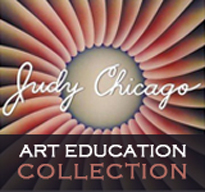Forum Replies Created
-
AuthorPosts
-
DRyland
ParticipantI agree with Jacqueline about maturity playing an integral role when race, gender, sexuality and disabilities are addressed in our present day curriculum. Teaching middle school students brings challenges in those areas because they are still trying to figure out where they fit in society. Questions arise and assumptions are created and answered usually not by the parent/guardian but rather the friends they associate with. As an educator, it is our responsibility to clear their vision and bring awareness (very carefully) so that there are no assumptions or stereotypes being formed. In our 21st Century world, I feel that this is where avatars can help break those barriers in the classroom. The avatar allows students to do things they might not normally do (whether it’s because of a disability or fear of acceptance). I think that challenges in the curriculum involving race, gender, disability and sexuality will always exist but to eliminate some question and bring awareness is the goal.
DRyland
ParticipantI agree with you in the fact that art educators are bounded by administrative requirements that tend to overshadow student needs. I love the fact that I can choose how I want to teach the students but become frustrated when certain cross-curricular implementations are requested. It is important to integrate subjects as long as the “original” subject did not lose its identity (Lowenfeld & Brittain, 1975). Studio art is where creativity, innovation and dialogue come together as one.
DRyland
ParticipantThe change I would like to see implemented in present-day art curriculum would be to ensure that 21st Century technology is filtered into the art classroom. It is important to teach the components of art, the history behind the artworks as well as spend time in the art making but the curriculum has to also include connections to the world the students live in and will continue to grow in. There are so many ways to research, inspire, connect and create through technology but unfortunately (or at least in my district), the “special area” subjects are the last to receive any technology driven teaching/learning tools.
Professor Elliot Eisner in his lecture, “What Do the Arts Teach” reminded me to continue to explore new ways of exposing what the students are learning in my classroom. It is through this awareness that the teachers, administrators and community will get a glimpse of how important the arts are to everyone. Finding the time to organize, display and promote is a difficult task to master because of the other tasks that need to be completed (SLOs, grading, team meetings, covering walls of art for PSSA testing, faculty meetings, etc.)
I am fortunate to work in a building where the administration is very supportive of the arts and my goal would be to continue to demonstrate that art is an integral part of every student’s learning. This continues to bring awareness and help create the change I need to get technology into the art classroom.DRyland
ParticipantMy opinion of present-day studio art, art education and art history is that at the middle school level, art is regarded as a “special” and not a privilege for the students. I understand that it is not a core subject but it is the “A” in STEAM where creativity sparks the imagination to use the science, technology and math skills. Only having approximately 60 days with my students, it makes it very difficult to go in-depth for an extended period of time. I am trying to introduce my students to a variety of media and expose them to as many artists as I can while providing a connection to their every day life. I am also confronted with the fact that after my class, some students will not enter another art classroom until they reach high school or college (and that is if they choose an art class). I then have to make sure that my lessons align with standards and that I have a certain percentage of students at mastery or proficient in their learning ability. The art curriculum, in my opinion, needs to continue to find a balance between the traditional art history/ art making and the future.
DRyland
ParticipantAmen to your response. I too believe that present day art curriculum is not diverse enough to embrace gender and sexuality in a free and expressive manner as art is meant to be. In the same breath, being a middle school teacher and parent, I understand the concern parents might have with a curriculum that introduces expressive ideas of sexuality and gender to this age group. For me, a high school setting would be better suited to explore all issues of gender, sexuality, and disability. Even then, there is the fine line of over-stepping boundaries in the public school system. We live in a society where no one, particularly teachers, are allowed to criticize or comment on something or someone for fear of being discriminating toward a group or individual. As mentioned in KStamm’s post, the floodgates would open.
In the school where I teach, some disabilities are recognized and are integrated into the art curriculum. We have a class dedicated to the IU students and all the emotional support students are a part of an art class as part of their regular class studies. Some might view it as being “the easy class” to integrate these students into but it is a valuable class for these students.
I feel that present-day art curriculum is definitely more open to diverse topics at the higher level forms of learning where maturity is developed and expression is embraced. -
AuthorPosts
